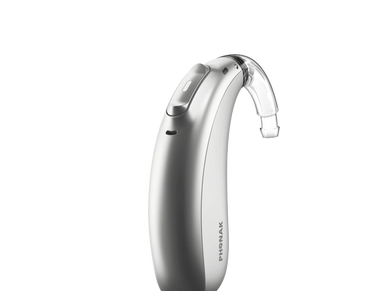Hearing Aids available from our Georgetown, TX location or i
Receiver in the canal

The receiver-in-canal RIC style is usually an open fit hearing aid that sits behind your ear and feeds sound via a thin coasted wire to a speaker that fits in your ear canal. It's one of the smallest and discrete types of hearing aids and can be powered by batteries or rechargeable.
Completely in-the-canal

Sitting deep inside your ear canal, CIC hearing aids are lightweight, custom-fit and easy to handle. With a removal tab positioned in the outer ear, completely-in-the-canal hearing aids are almost completely invisible and allow your ear's natural shape to funnel sound to the device the way it was meant to.
In-the-canal or 1/2 shell
In-the-canal or 1/2 shell

In-the-canal (ITC) or 1/2 shell hearing aids fit more deeply into your ear canal than ITE hearing aids, so they’re typically less visible. Because of their smaller size, they use smaller batteries and may be more difficult to handle. They are typically the smallest size employing directional microphones, for better hearing in noisy environments.
Full-Shell in-the-ear
In-the-canal or 1/2 shell

Full shell instruments fill the entire outer ear bowl. Due to their larger size, they allow for more features and functions. These include a larger battery or rechargeability, directional microphones, volume controls, and can fit larger receivers for more severe hearing losses. They are designed for more severe hearing losses or for those who have trouble grasping and handling small objects.
Behind-the-ear

Behind-the-ear hearing aids are normally recommended for those with more severe hearing loss. They allow for more stable amplification and utilize an earpiece (usually custom) to keep deliver sound and provide security of the aid. BTE hearing aids are set up for either ear or both, however, your healthcare provider may recommend a CROS/BiCROS hearing aid system if you have normal hearing or minimal hearing loss in one ear, and very little or no usable hearing in the poorer ear. This allows you to hear from the poorer side — even though it delivers all sounds to your better ear. These devices are especially beneficial when someone is talking on the side of the poorer ear. CROS stands for “Contralateral Routing of Signals.” BiCROS stands for “Bilateral Contralateral Routing of Signals.”
INSTANT FIT MINI CIC

Instant Fit Mini CIC hearing aids are among the smallest and least visible hearing aids in the industry. Utilizing a comfortable cushioned ear sleeve, these hearing aids fit a variety of ear sizes and shapes and can be fit in the office in 1 day.
If you're worried about controls, don't be. Despite the small size these hearing aids can be adjusted using your cell phone and dedicated app.
Copyright © 2025 Sun City Audio - All Rights Reserved.
Powered by GoDaddy
